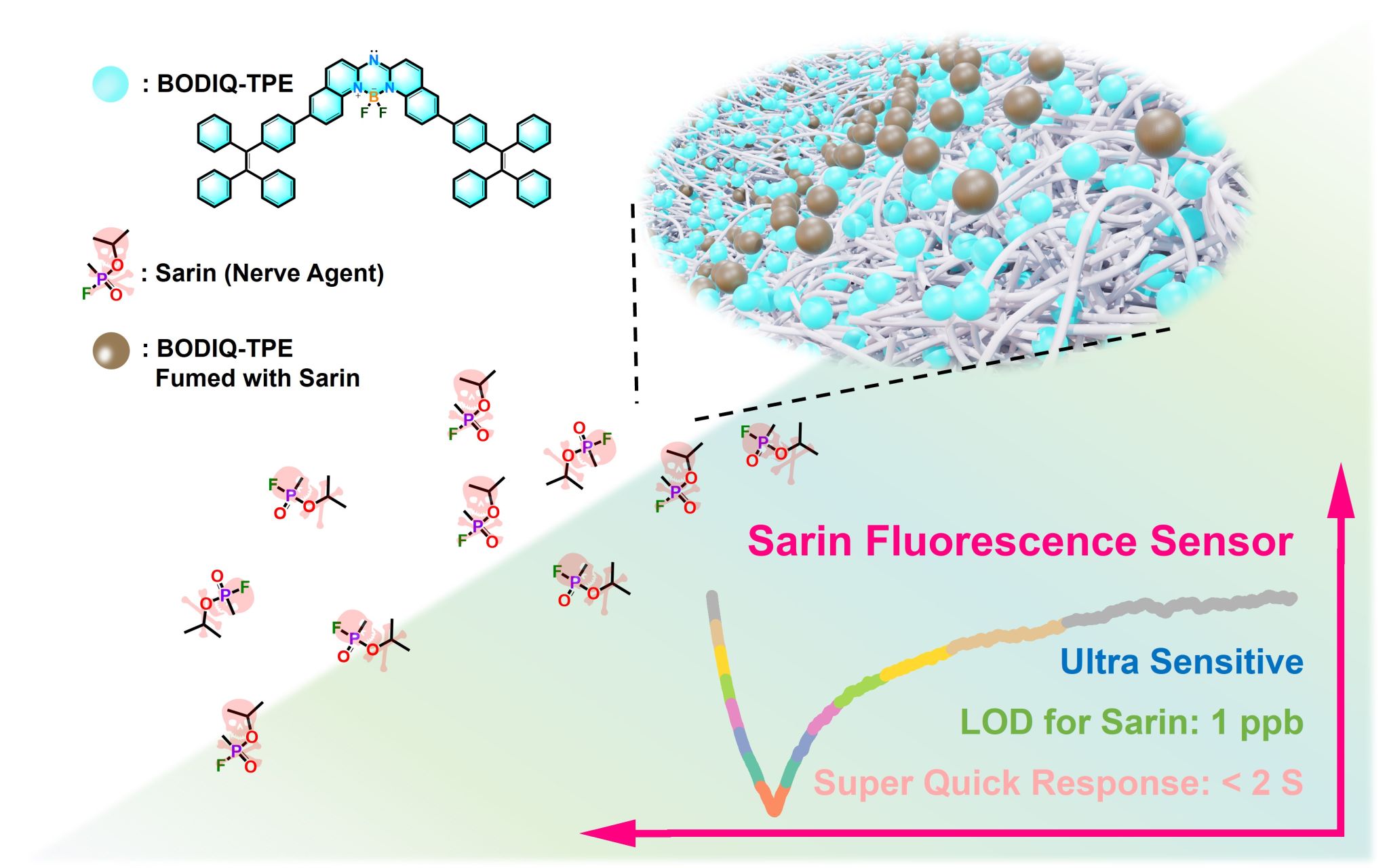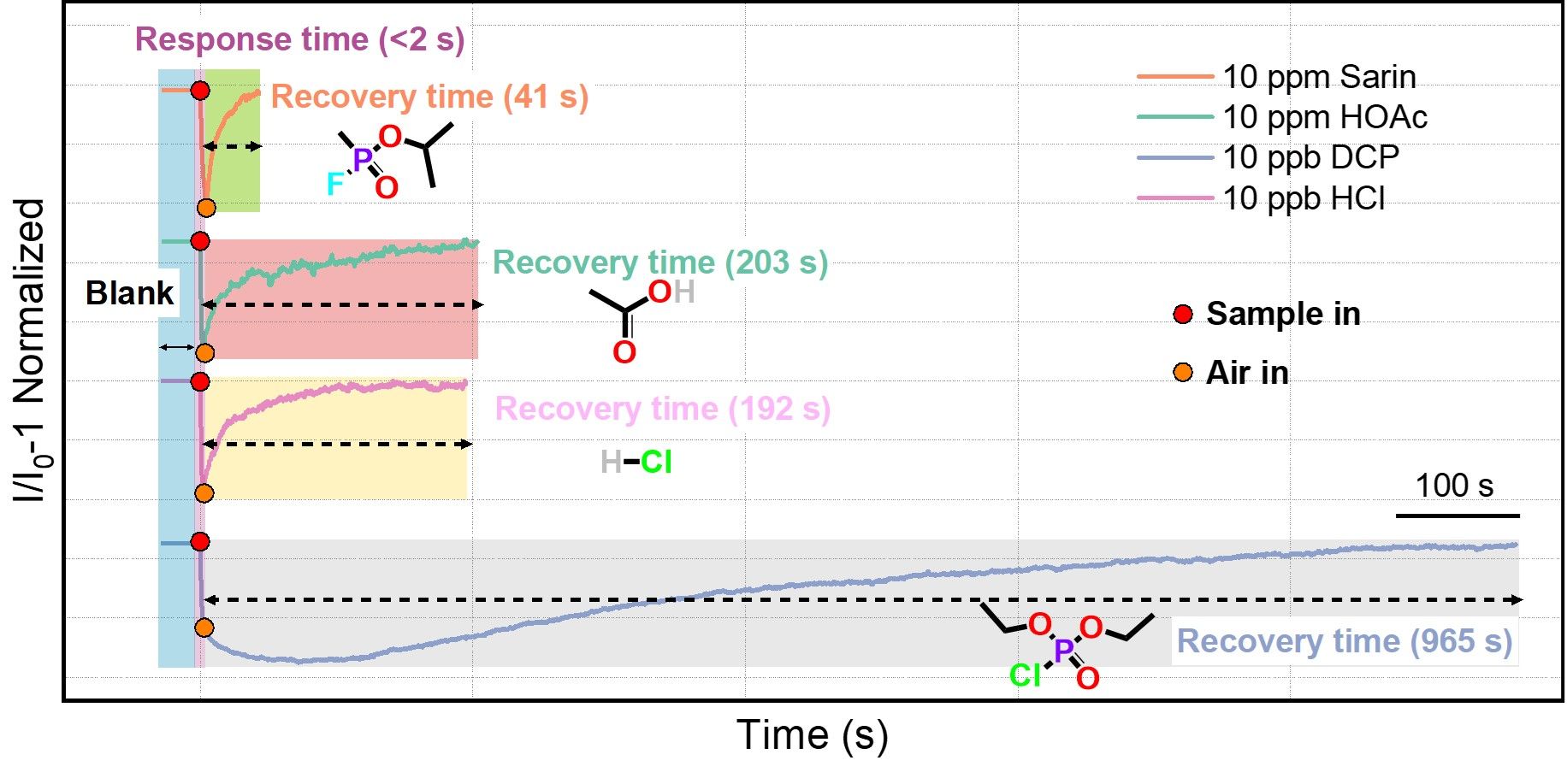

Zhijie Zhou, Lei Zhang, Lingya Peng, Yingjie Li, Xiaolin Zhu, Yidi Wu, Zebiao Qiu, Gang He, Molin Qin, Haonan Peng, Yu Fang. Aggregate 2024, e629.
Sarin is an extremely toxic nerve agent that can cause severe harm to the human nervous system, potentially even leading to death. Furthermore, its high volatility and relatively simple production process make it a particularly dangerous threat. Therefore, the development of rapid, accurate, and selective detection methods for sarin gas is crucial for enhancing emergency response capabilities and efficiency, safeguarding public health and safety, and maintaining social stability and harmony. Film-based fluorescence sensing is currently recognized as one of the most promising technologies for detecting trace amounts of substances. However, achieving efficient and specific interactions between fluorescent materials and sarin, as well as accurately distinguishing sarin from other acidic substances, remains a significant technical challenge.

Fig. 1 Scheme of the nanofilm based on boron-difluoride derivatives for sarin sensing
This study developed a fluorescent nanomembrane sensor based on boron-difluoride derivatives for detecting sarin vapor in the environment and providing feedback through fluorescence signals. The sensor's key feature is the use of planar difluoroboron derivatives (aza-BODIQ) as the fluorescent recognition unit. Its unique chemical structure allows effective interaction with sarin. Additionally, tetraphenylethylene was introduced as a steric structural framework, significantly enhancing molecular mass transfer efficiency and further stabilizing the probe. This structural design enables rapid and complete interaction between sarin molecules and the probe, thereby improving detection sensitivity and response speed. Moreover, by leveraging differences in sensor response kinetics, the system successfully distinguishes sarin from interfering acidic substances with high precision.

Fig. 2 Sensing response kinetic curve
The sensor demonstrates a theoretical and practical detection limit of 0.7 ppb and 1 ppb for sarin vapor, respectively. It maintains exceptionally high sensitivity even in the presence of various interfering gases. With a response time of less than 2 seconds, it can rapidly detect the presence of sarin vapor. The detection range spans from 1 ppb to 1000 ppm, covering a wide range of concentrations and making it suitable for diverse environmental conditions. Through sensor kinetics analysis, the device can distinguish between sarin, diethyl chlorophosphate, and HCl vapor, showcasing its potential for applications in complex environments. This paves the way for sustainable, low-cost, and eco-friendly portable devices, as well as applications in environmental monitoring and tracking.
First Authors: Zhou Zhijie, master’s candidate, Shaanxi Normal University; Dr. Zhang Lei, Xidian University
Correspondence Authors: Prof. Peng Haonan and Associate Researcher Zhu Xiaolin, Shaanxi Normal University; Dr. Qin Molin, State Key Laboratory of NBC Protection for Civilian; Prof. He Gang, Xi’an Jiaotong University
Full Text Link: https://doi.org/10.1002/agt2.629